constituent assembly of india debates (proceedings)- volume vii
constituent assembly of india debates (proceedings)- volume vii
constituent assembly of india debates (proceedings)- volume vii
You also want an ePaper? Increase the reach of your titles
YUMPU automatically turns print PDFs into web optimized ePapers that Google loves.
The Directive Principles are like the Instrument <strong>of</strong> Instructions which were issued to the Governor-<br />
General and to the Governors <strong>of</strong> the Colonies and to those <strong>of</strong> India by the British Government under the<br />
1935 Act. Under the Draft Constitution it is proposed to issue such instruments to the President and to<br />
the Governors. The texts <strong>of</strong> these Instruments <strong>of</strong> Instructions will be found in Schedule IV <strong>of</strong> the<br />
Constitution. What are called Directive Principles is merely another name for Instrument <strong>of</strong> Instructions.<br />
The only difference is that they are instructions to the Legislature and the Executive. Such a thing is to<br />
my mind to be welcomed. Wherever there is a grant <strong>of</strong> power in general terms for peace, order and good<br />
government, it is necessary that it should be accompanied by instructions regulating its exercise.<br />
The inclusion <strong>of</strong> such instructions in a Constitution such as is proposed in the Draft becomes<br />
justifiable for another reason. The Draft Constitution as framed only provides a machinery for the<br />
government <strong>of</strong> the country. It is not a contrivance to install any particular party in power as has been<br />
done in some countries. Who should be in power is left to be determined by the people, as it must be, if<br />
the system is to satisfy the tests <strong>of</strong> democracy. But whoever captures power will not be free to do what<br />
he likes with it. In the exercise <strong>of</strong> it, he will have to respect these instruments <strong>of</strong> instructions which are<br />
called Directive Principles. He cannot ignore them. He may not have to answer for their breach in a Court<br />
<strong>of</strong> Law. But he will certainly have to answer for them before the electorate at election time. What great<br />
value these directive principles possess will be realized better when the forces <strong>of</strong> right contrive to capture<br />
power.<br />
That it has no binding force is no argument against their inclusion in the Constitution. There may be a<br />
difference <strong>of</strong> opinion as to the exact place they should be given in the Constitution. I agree that it is<br />
somewhat odd that provisions which do not carry positive obligations should be placed in the midst <strong>of</strong><br />
provisions which do carry positive obligations. In my judgment their proper place is in Schedules III A &<br />
IV which contain Instrument <strong>of</strong> Instructions to the President and the Governors. For, as I have said, they<br />
are really Instruments <strong>of</strong> Instructions to the Executive and the Legislatures as to how they should<br />
exercise their powers. But that is only a matter <strong>of</strong> arrangement.<br />
Some critics have said that the Centre is too strong. Others have said that it must be made stronger.<br />
The Draft Constitution has struck a balance. However much you may deny powers to the Centre, it is<br />
difficult to prevent the Centre from becoming strong. Conditions in modern world are such that<br />
centralization <strong>of</strong> powers is inevitable. One has only to consider the growth <strong>of</strong> the Federal Government in<br />
the U.S.A. which, notwithstanding the very limited powers given to it by the Constitution, has out-grown<br />
its former self and has overshadowed and eclipsed the State Governments. This is due to modern<br />
conditions. The same conditions are sure to operate on the Government <strong>of</strong> India and nothing that one<br />
can do will help to prevent it from being strong. On the other hand, we must resist the tendency to make<br />
it stronger. It cannot chew more than it can digest. Its strength must be commensurate with its weight.<br />
It would be a folly to make it so strong that it may fall by its own weight.<br />
The Draft Constitution is criticized for having one sort <strong>of</strong> constitutional relations between the Centre<br />
and the Provinces and another sort <strong>of</strong> constitutional relations between the Centre and the Indian States.<br />
The Indian States are not bound to accept the whole list <strong>of</strong> subjects included in the Union List but only<br />
those which come under Defence, Foreign Affairs and Communications. They are not bound to accept<br />
subjects included in the Concurrent List. They are not bound to accept the State List contained in the<br />
Draft Constitution. They are free to create their own Constituent Assemblies and to frame their own<br />
constitutions. All this, <strong>of</strong> course, is very unfortunate and, I submit quite indefensible. This disparity may<br />
even prove dangerous to the efficiency <strong>of</strong> the State. So long as the disparity exists, the Centre's<br />
authority over all-India matters may lose its efficacy. For, power is no power if it cannot be exercised in<br />
all cases and in all places. In a situation such as maybe created by war, such limitations on the exercise<br />
<strong>of</strong> vital powers in some areas may bring the whole life <strong>of</strong> the State in complete jeopardy. What is worse<br />
is that the Indian States under the Draft Constitution are permitted to maintain their own armies. I<br />
regard this as a most retrograde and harmful provision which may lead to the break-up <strong>of</strong> the unity <strong>of</strong>


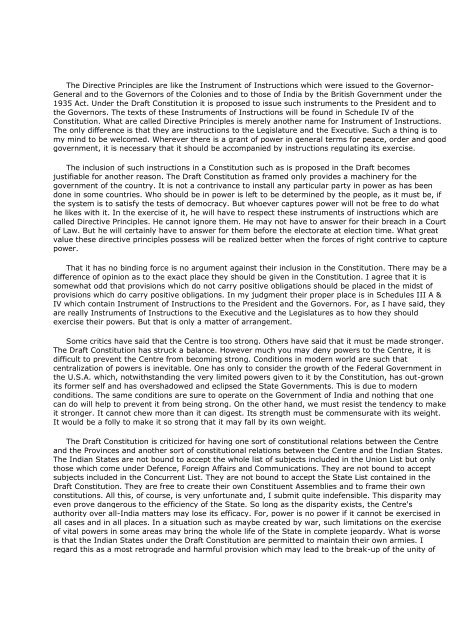
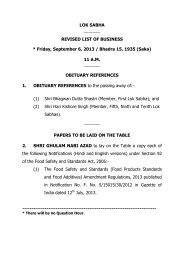
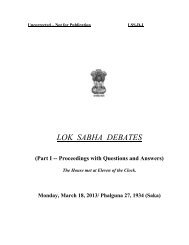

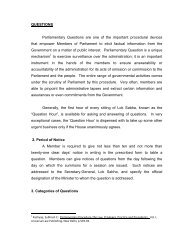
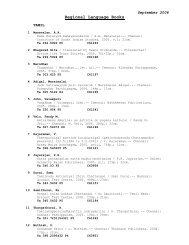

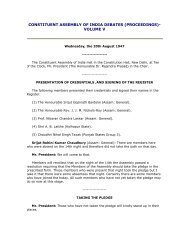
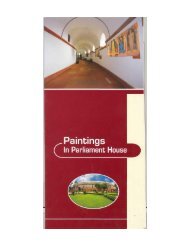
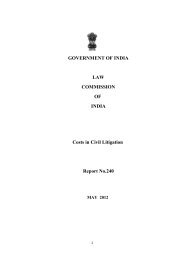
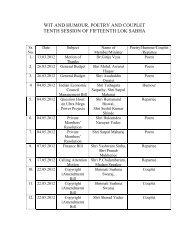
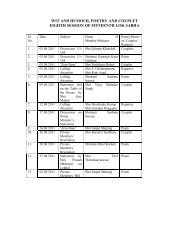

![gÉÉŌ A.]ÉŌ. xÉÉxÉÉ](https://img.yumpu.com/8015720/1/190x245/geeo-aeo-xeexee.jpg?quality=85)
